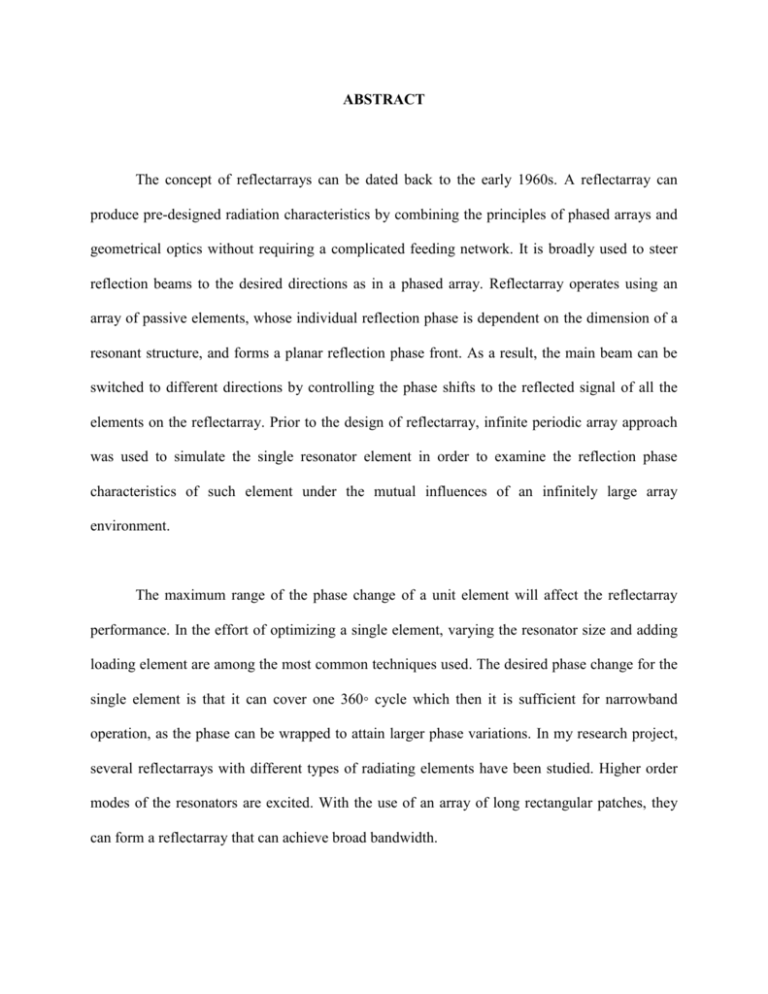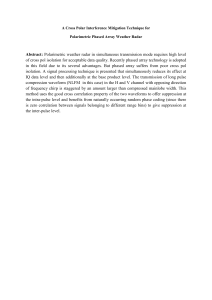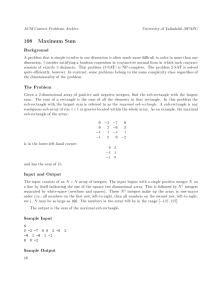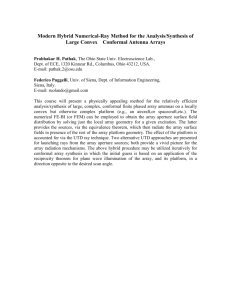ABSTRACT The concept of reflectarrays can be dated back to the
advertisement

ABSTRACT The concept of reflectarrays can be dated back to the early 1960s. A reflectarray can produce pre-designed radiation characteristics by combining the principles of phased arrays and geometrical optics without requiring a complicated feeding network. It is broadly used to steer reflection beams to the desired directions as in a phased array. Reflectarray operates using an array of passive elements, whose individual reflection phase is dependent on the dimension of a resonant structure, and forms a planar reflection phase front. As a result, the main beam can be switched to different directions by controlling the phase shifts to the reflected signal of all the elements on the reflectarray. Prior to the design of reflectarray, infinite periodic array approach was used to simulate the single resonator element in order to examine the reflection phase characteristics of such element under the mutual influences of an infinitely large array environment. The maximum range of the phase change of a unit element will affect the reflectarray performance. In the effort of optimizing a single element, varying the resonator size and adding loading element are among the most common techniques used. The desired phase change for the single element is that it can cover one 360◦ cycle which then it is sufficient for narrowband operation, as the phase can be wrapped to attain larger phase variations. In my research project, several reflectarrays with different types of radiating elements have been studied. Higher order modes of the resonators are excited. With the use of an array of long rectangular patches, they can form a reflectarray that can achieve broad bandwidth.











